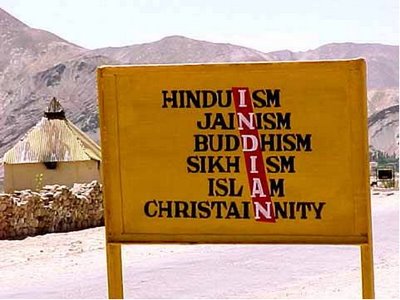I included 4 countries in this sample :
The US because it’s the world’s super-power, France because I live here now, India because its home to me, & finally, China as it is inevitably compared with India almost all the time !
5 broad areas – Geography, Demography, Education, Economy & Labor Force
Geography
| Comparison of | France | India | China | USA |
| Land-mass (‘000 sqkm) | 552 | 2,973 | 9,569 | 9,162 |
| Water-mass (‘000 sqkm) | 1.5 | 314 | 27 | 665 |
| Total mass | 553 | 3,287 | 9,596 | 9,827 |
In terms of total mass,
- US and China are about the same size
- China about 3 times as large as India
- India is about 6 times as large as France
Water :
- Only 0.3% of China’s entire area is water. This is very very little.
- India is endowed with almost 10%, in comparison.
- Shows why China is making an attempt to divert the Brahmaputra river to its northern areas.
| Comparison of | France | India | China | USA |
| Arable land | 33.50% | 48.80% | 14.86% | 18% |
| Irrigated land | 26 | 558 | 546 | 224 |
In terms of Arable land, we find that
– even though the US is 3 times as big as India, its soil is much less fertile, which is why it has made every effort to scientifically advance its capacities for maximizing yield from crops – going so far as to modify the DNA of the food itself to achieve its goals.Seen in a different light, Monsanto & co could have purely economic aims, & nothing to do with securing USA’s food sovereignty.
– India’s land is ~ more than thrice as fertile as China’s, owing to its tremendous river system; so even though China is 3x the size of India, we have roughly the same amount of available arable land. In fact, India has slightly more.
Demography
| Comparison of | France | India | China | USA |
| Population (mm) | 62.8 | 1,173 | 1,330 | 310 |
– The US has almost 5 times the # of people as France. India and China have about 20 times as many.
| Comparison of | France | India | China | USA |
| Median age | 40 | 26 | 35.2 | 37 |
| Pop growth rate | 0.53% | 1.38% | 0.49% | 0.97% |
- We see here one of the challenges faced by advanced, well-industrialized economies – the median age.
- India is by far the youngest nation, and the best positioned for the next half-century.
- Population growth rate – France shows a rate that is characteristic of advanced economies.
- The US has almost twice the growth rate, owing to its huge migrant community (Hispanic, Asian etc) with healthier and larger families than the Caucasian norm.
- China exhibits a very low birth rate for a country heading to be a superpower. Its program of “1-child per couple” since 1979, forced sterilizations etc are already proving to have disastrous demographic consequences for the country as a whole.
| Comparison of | France | India | China | USA |
| % of Pop: Urban area | 77% | 29% | 43% | 82% |
Urban areas generally provide for a higher standard of living than Rural areas. In most industrialized nations, the majority of the population has access to the best private and public services.
In the next 20 years, India and China together will see ~ 600 million people moving to urban areas.
| Comparison of | France | India | China | USA |
| Life expectancy (yrs) | 81 | 66.5 | 74.5 | 78 |
On average, the Chinese live about 8 years longer than Indians, showing one measure of the difference in ‘advancement’ between the two economies. People in most industrial nations live till about 80, some even higher.
Education
| Comparison of | France | India | China | USA |
| Literacy | 99% | 61% | 91.60% | 99% |
| School life exp (y) | 16 | 10 | 11 | 16 |
| Edu exp (% gdp) | 5.60% | 3.20% | 1.90% | 5.50% |
- Literacy here is defined as percentage of population that can do basic reading and writing – at age 15.
- France and the US are at 99% literacy levels, whereas India is way behind China on Literacy rate.
- Here we see the benefit of China’s state-planning; Overall, children in India/China still have a full 5 years fewer of schooling on average, compared to the ‘developed’ nations.
On the positive side, since the 1990s, primary school enrollment has risen by 22% in India, and India is spending more of its resources on education than China is – this is more of a “catch-up”. Not just that, but amongst Brazil, India, China & Russia, Indian Youth – both men & women show much faster acceleration in literacy than anywhere else.Overall, India has a 61% literacy rate for adults, but for the youth (ages 15-24), the rate has climbed to 76% (as of 2006) Further, for women, this difference is even more stark : average adult rate of literacy is 48%, but for young women, it is 68% – a whole 20pts higher. Another major factor affecting education for young women has been the rate of teenage pregnancies. For 15-19 year olds, the fertility rate fell from nearly 100% in mid 1990s to just over 60% currently – in 15 years.
On the other hand – if we look at the % of all university graduates that have science or engineering degrees, this # is 40% in China, whereas “only” 23% in India. This too will have to change – in quantitative, but esp qualitative terms.
Economy & Labor force
| Comparison of | France | India | China | USA |
| GDP PPP ($ trillion) | 2.16 | 4.05 | 9.85 | 14.7 |
| Indebtedness to rest of the world ($ trillion) | 5.0 | 0.2 | 0.3 | 13.5 |
I don’t subscribe to the ‘GDP’ measure per se, but it still is the generally accepted (and available) benchmark of how “well” a country is doing, economically. A nation’s GDP at purchasing power parity (PPP) exchange rates is the sum value of all goods and services produced in the country valued at prices prevailing in the United States.
- China is about 2.5 times higher than India. The EU as a single entity is slightly larger than the US.
- The curious thing to look at is how much firewood is being borrowed / used to support the flames – France and the US are heavily indebted to the rest of the world, and absent a new $ or a new € will need much of the same debt to fuel their growth.
- India & China are in stark contrast – almost debt free to rest of world. Both countries borrow locally from their own people & institutions to fund growth
- China’s actual internal debt is ~ 3x what they state (Wall St sees through this fudging as it often takes one manipulator to recognize another 🙂
| Comparison of | France | India | China | USA |
| Labor force (millions) | 28 | 467 | 813 | 154 |
| % of population | 45% | 40% | 61% | 50% |
| %, # in Agriculture | 4% / 1.1 | 52% / 243 | 40% / 321 | 0.7% / 1.1 |
| %, # in Industry | 24% / 7 | 14% / 65 | 27% / 221 | 20% / 31 |
| %, # in Services | 72% / 20 | 34% / 160 | 33% / 268 | 79% / 122 |
Here, we can see the massive size of labor available in India & China
Of note is the rate of addition to this labor force – India is set to provide the largest increase to the global labor force over the next few decades, with an estimated 110 million increase in the 2010-20 decade alone. (sending full note separately) As with France, USA and other advanced economies, India, China & other Asian nations will utilize more of their labor pool towards the service sector, and decrease labor in agriculture.
[1] https://www.cia.gov/library/publications/the-world-factbook/
 [2] GS – India’s Rising Labor Force
[2] GS – India’s Rising Labor Force
(published July 2010). Page 3 has an exec summary. Report also has some interesting appendices (p32-40)



